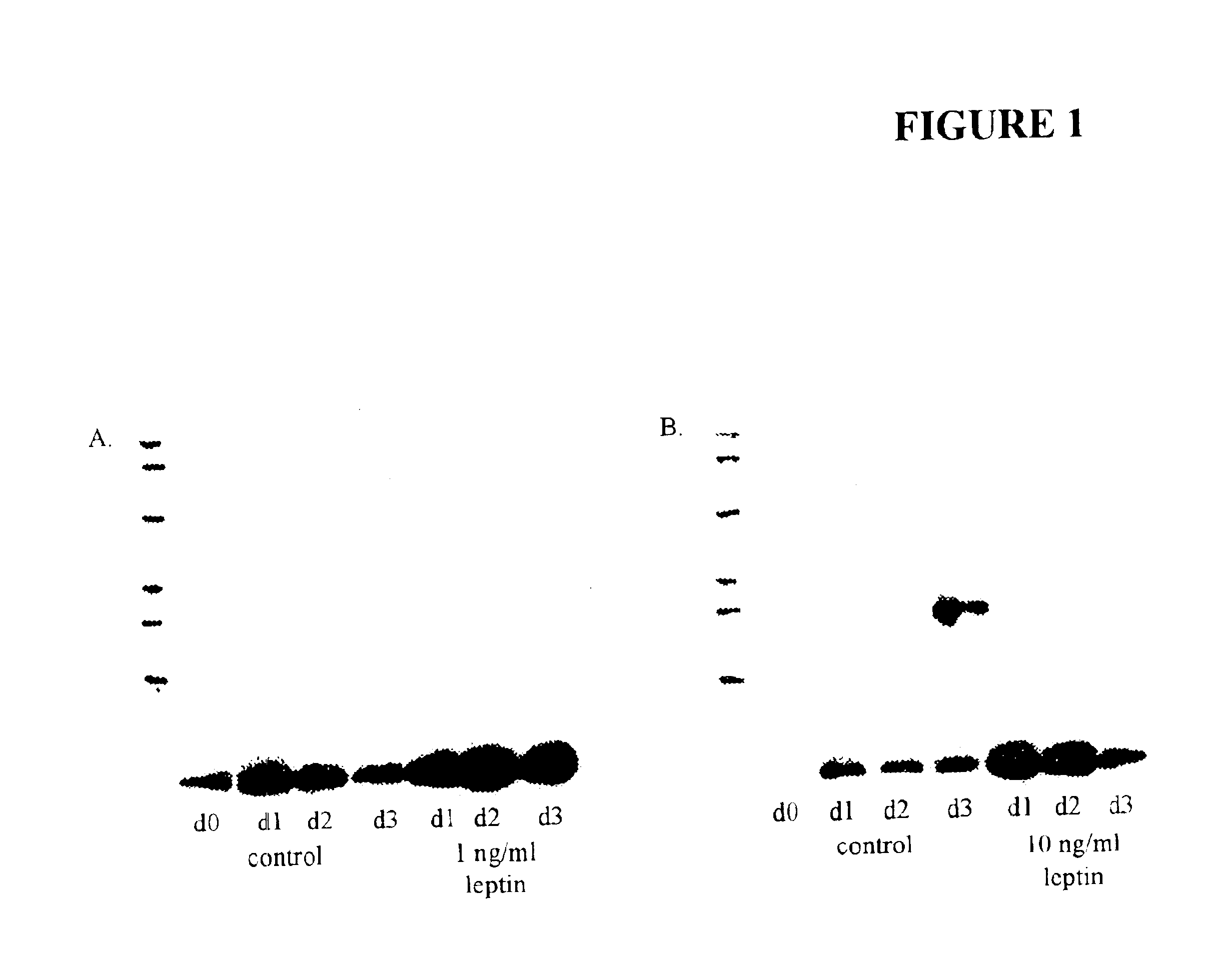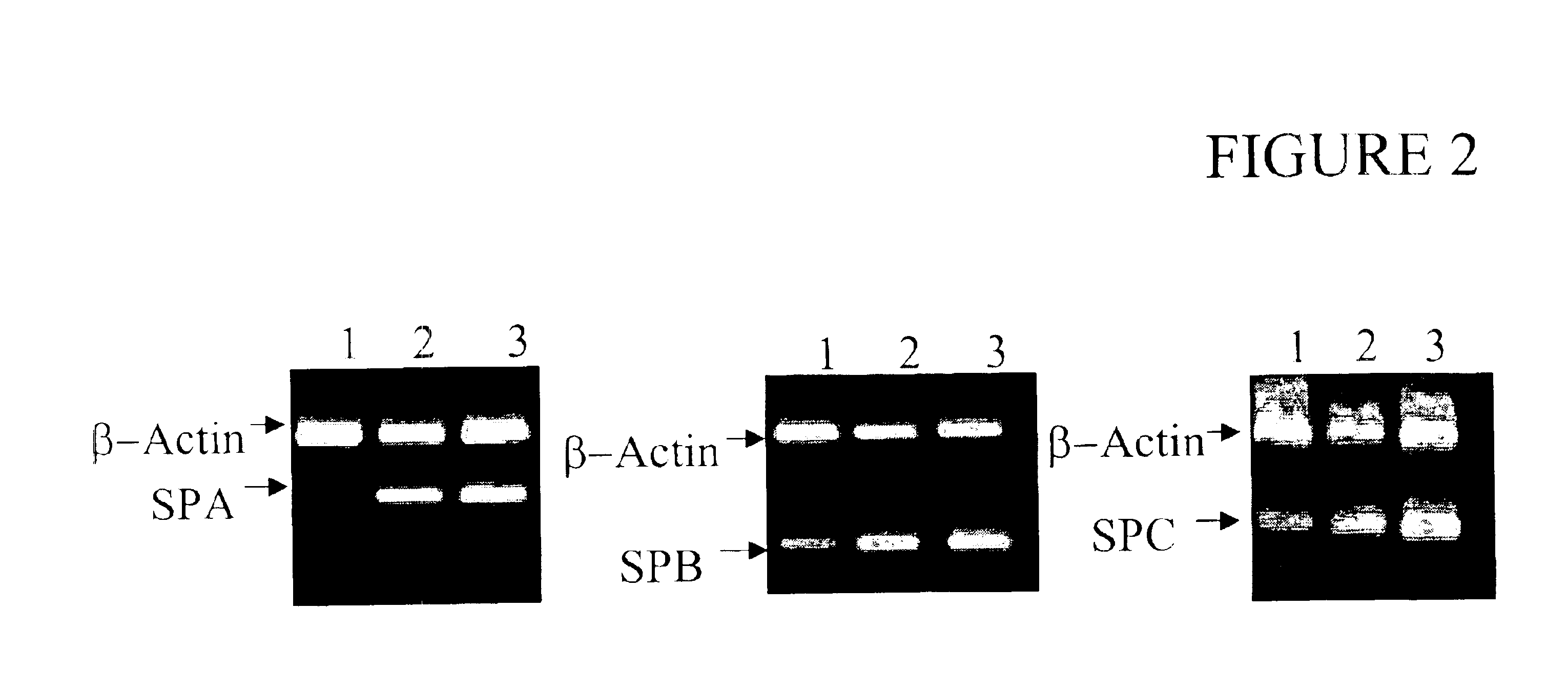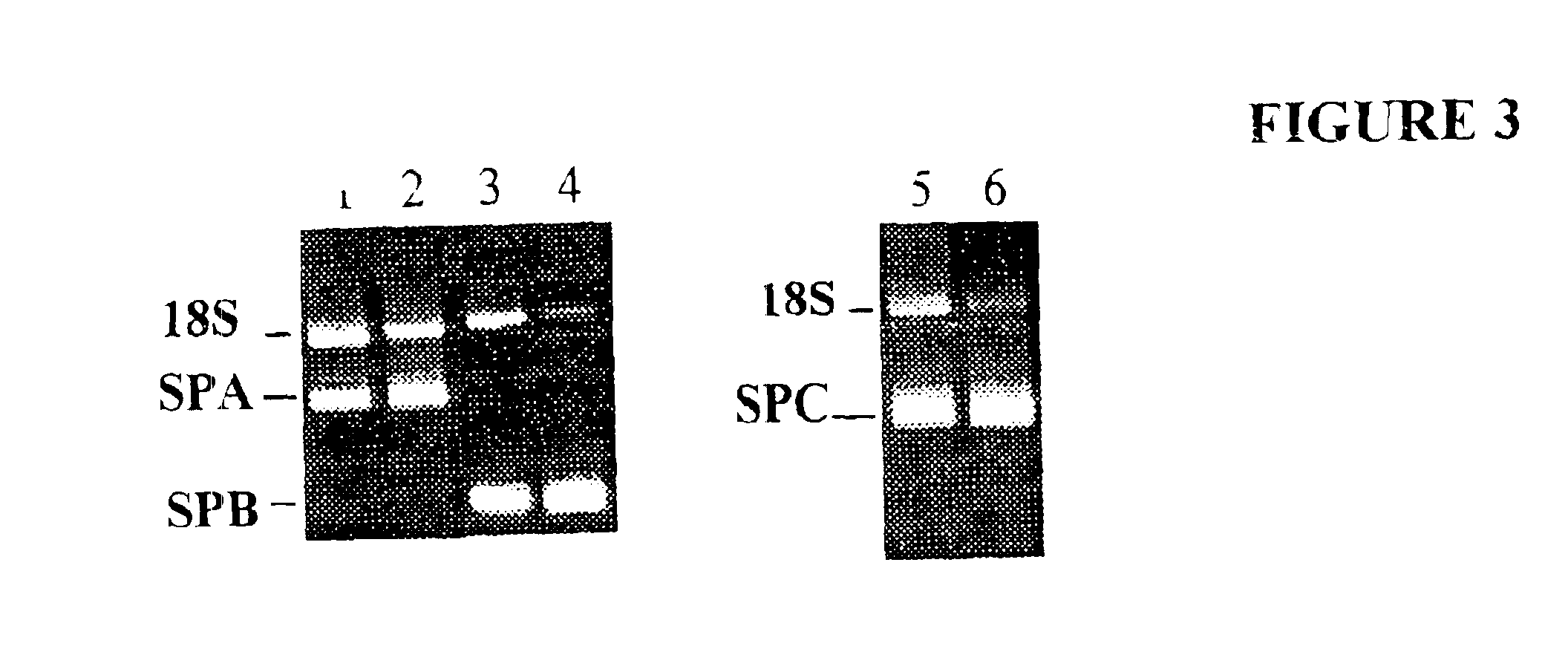Method for treating respiratory distress syndrome
a respiratory distress syndrome and treatment method technology, applied in the field of respiratory distress syndrome treatment, can solve the problems of poor weight gain, premature stoppage of trials, poor lung surfactant production, etc., to improve lung surfactant production, enhance surfactant production, and increase the effect of surfactant production
- Summary
- Abstract
- Description
- Claims
- Application Information
AI Technical Summary
Problems solved by technology
Method used
Image
Examples
examples
[0035]1. Effects of Leptin on Surfactant Production in the Fetal Lung Explant Model
[0036]We have used a fetal lung explant model to mimic the conditions of the premature lung. Lungs from d21 rat fetuses, term being 22 days, were dissected free of heart, trachea and bronchi and placed in ice-cold serum free Waymouth medium and cut into 1 mm3 pieces on a McIlwain tissue chopper. The lung explants were placed in tissue culture dishes that were scratched (along each half) to facilitate attachment of explants. The excess medium was aspirated and fresh medium (2 ml for 60 mm plate) was gently placed on the explants. The 17-21 d explants were incubated in 95% O2-5% CO2, since incubation of these explants in 5% CO2 in air can cause compression of airways (Gross and Wilson, J. Appl. Physiol. 55: 1725-32, 1983). The petri dishes were placed on a tilting platform and allowed to rest for 90 min in a humidified atmosphere in a CO2 incubator. Thereafter, the plates were tilted at 34 cycles per mi...
PUM
| Property | Measurement | Unit |
|---|---|---|
| concentration | aaaaa | aaaaa |
| volume | aaaaa | aaaaa |
| volume | aaaaa | aaaaa |
Abstract
Description
Claims
Application Information
 Login to View More
Login to View More - R&D
- Intellectual Property
- Life Sciences
- Materials
- Tech Scout
- Unparalleled Data Quality
- Higher Quality Content
- 60% Fewer Hallucinations
Browse by: Latest US Patents, China's latest patents, Technical Efficacy Thesaurus, Application Domain, Technology Topic, Popular Technical Reports.
© 2025 PatSnap. All rights reserved.Legal|Privacy policy|Modern Slavery Act Transparency Statement|Sitemap|About US| Contact US: help@patsnap.com



